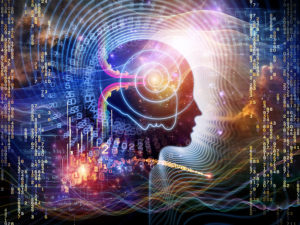 When electricity is measured in a brain region, the total value includes the sum of electricity from many different sources. Part of the measurement refers to electrical signals of the action potential along the axon. Some refers to the electrical field surrounding various brain structures. Another represents synchronous oscillations of groups of neurons. In the hippocampus, the center of memory, previous research demonstrated specific frequencies used to transmit memory information between regions—one frequency for space information and one for time. This post describes recent research about the electrical local field potential in the hippocampus. This sum of electrical activity in the hippocampus consists of three major brain wave rhythms—theta, gamma and sharp wave ripples. In the past, certain behaviors have been associated with these rhythms, but recent research shows more complexity in hippocampus brain wave signals.
When electricity is measured in a brain region, the total value includes the sum of electricity from many different sources. Part of the measurement refers to electrical signals of the action potential along the axon. Some refers to the electrical field surrounding various brain structures. Another represents synchronous oscillations of groups of neurons. In the hippocampus, the center of memory, previous research demonstrated specific frequencies used to transmit memory information between regions—one frequency for space information and one for time. This post describes recent research about the electrical local field potential in the hippocampus. This sum of electrical activity in the hippocampus consists of three major brain wave rhythms—theta, gamma and sharp wave ripples. In the past, certain behaviors have been associated with these rhythms, but recent research shows more complexity in hippocampus brain wave signals.
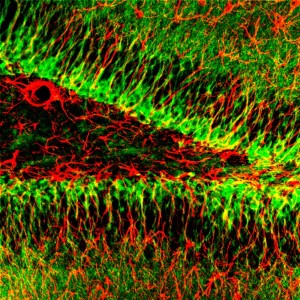
When neurons oscillate in synchrony, their electricity adds together so that measurements of field potential can pick them up. When each neuron oscillates at different rates, they do not sum into a large value and therefore and are too small to be picked up by current technology.
Because individual neurons do not correlate with advanced mental abilities, it has been assumed that the addition of large numbers of synchronous neurons do, such as with memory. The hippocampus is particularly dense and therefore has prominent measurable brain waves. In the hippocampus region CA1 neurons are aligned in parallel producing even greater brain wave intensity. Therefore, recent research has been able to begin to tease out the three prominent waves, how they interact and what they might be correlated with in mental experience.
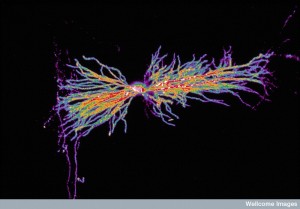 Another important factor involves interneurons, which are prominent in the same hippocampus regions. Interneurons are inhibitory neurons that affect a large number of excitatory neurons at once and therefore can have major effects on brain waves for that entire group of neurons. One important group of excitatory neurons that are affected by interneurons is correlated with understanding locations in space. These pyramidal place cells have major effects on brain waves. A previous post discussed place and time cells in the hippocampus.
Another important factor involves interneurons, which are prominent in the same hippocampus regions. Interneurons are inhibitory neurons that affect a large number of excitatory neurons at once and therefore can have major effects on brain waves for that entire group of neurons. One important group of excitatory neurons that are affected by interneurons is correlated with understanding locations in space. These pyramidal place cells have major effects on brain waves. A previous post discussed place and time cells in the hippocampus.
Types of Hippocampus Brain Waves
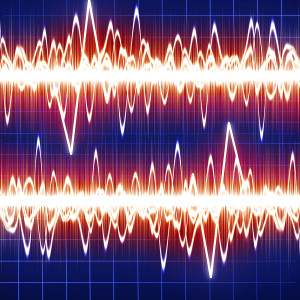 Each of the major brain waves measured in the hippocampus have specific mechanisms and are observed with specific behaviors. They have particular patterns of neuronal activity.
Each of the major brain waves measured in the hippocampus have specific mechanisms and are observed with specific behaviors. They have particular patterns of neuronal activity.
Theta waves are fairly slow in the range of 4 to 12 cycles per second. Gamma waves are fast between 25 and 100. Sharp wave ripples are very fast in the range of 110 and 250 cycles per second. These are called sharp wave ripples because they are added onto existing slow sharp waves in the realm of one cycle a second to one cycle every ten seconds.
Until recently, theta waves have been assumed to be related to learning new information. Sharp waves have been associated with making memories permanent (consolidation). There have been many associations with gamma waves, most notably as a binding factor for awareness or for concentration.
 Several other types of brain waves during deep sleep have been associated with memory as well. These include sleep spindles and slow oscillations. Sleep spindles occur during deep sleep, when brain waves have a slow frequency. These brain waves travel from the thalamus to the cortex every ten seconds at frequencies of 7 to 14. During deep sleep slow oscillations appear to regulate other brain waves. They are slow in the range of one per second and occur with cycling between two states of more and less electrical polarization.
Several other types of brain waves during deep sleep have been associated with memory as well. These include sleep spindles and slow oscillations. Sleep spindles occur during deep sleep, when brain waves have a slow frequency. These brain waves travel from the thalamus to the cortex every ten seconds at frequencies of 7 to 14. During deep sleep slow oscillations appear to regulate other brain waves. They are slow in the range of one per second and occur with cycling between two states of more and less electrical polarization.
Since it is difficult to get good readings in humans of the brain waves involved in deep structures of the hippocampus, most studies are in animals. Some human studies have been done with implanted electrodes. While there are not many, they tend to corroborate findings in mice. Studies in non-human primates also are similar.
Studies of theta rhythms show differences in mice and humans. Theta has been measured in patients with epilepsy and show decreased frequencies and different wave patterns during movement than in mice. Patients with epilepsy also show sharp wave ripples in deep sleep and rest as in rats and monkeys. In monkeys fast gamma is associated with memory.
Theta Rhythms in the Hippocampus
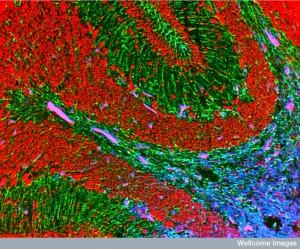 Theta occurs in all areas of the hippocampus when awake and active, and during REM dreaming sleep. They occur in many other brain regions as well. Many studies show that the brain region medial septum-diagonal band of Broca regulates theta in the hippocampus.
Theta occurs in all areas of the hippocampus when awake and active, and during REM dreaming sleep. They occur in many other brain regions as well. Many studies show that the brain region medial septum-diagonal band of Broca regulates theta in the hippocampus.
Inhibitory GABA cells in the septum affect interneurons in the hippocampus CA1 and CA3 regions. They decrease inhibition and therefore increase theta rhythms. The mechanism is complex because there are many kinds of interneurons in the hippocampus with different effects. Interneurons that have different neurotransmitters have varied effects on distinct phases in the theta cycle—somastatin and parvalbumin. It is possible that parvalbumin type interneurons select which place cells participate. Somastatin appears to affect the edges of the “place”.
There are multiple other mechanisms involved. One mechanism has been found recently, where interneurons suppress rhythms of the excitatory pyramidal cells. Another mechanism actually increases firing. Mechanisms not related to GABA have been found. Specific excitatory neurons appear to be needed for individual place cells. Specific channels in pyramidal cells influence this process (HCN1). Other neurons from the septum (cholinergic) also are involved. Therefore, there are a large number of factors in creating theta.
 To make matters more confusing, theta can also occur without septum input at all. These appear to be related to hippocampus circuits.
To make matters more confusing, theta can also occur without septum input at all. These appear to be related to hippocampus circuits.
Despite this confusion, septum appears to be the main mechanism in animals during behavior.
Studies show theta is related to memory efficiency in animals. It has been assumed that theta is vital in human memory. A recent study of place cells showed that theta occurs when animals are in new spaces. However, sometimes place cells formed without theta. Flying bats have place cells without theta. The problem with this research is that memory formation is very complex and not well understood. It involves multiple steps.
Some studies find that multiple neurons are needed for computations and these have been called neuronal assemblies. Some of these occur in sequences of place cells, such as moving through an environment. These are called theta sequences and refer to the different environments travelled. Theta sequences appear to be important in memory of the excursion. These sequences change as the animal moves. Theta is involved in memory of complex movements and experiences.

Theta may also be involved in the relationship of various sensory information such as sight and smell to memories. In mice, rates of whisking smell behaviors correlates with theta rhythms. If they sniffed more slowly than the rhythm, behavior was impaired. This same situation occurs in vision with the rates saccade movements. Theta is involved in sampling sensory data.
As with the place sequences, various types of theta in sensory memory forms distinct units of perception or information. Studies with cells that measure head directions had distinct types of theta as well. Consistent related information is part of one theta cycle type and other information in different ones.
Theta also occurs in REM and is different than when awake. Research has shown that during REM some of the theta cycles are re experiences raising the question of memory consolidation.
Sharp Wave Ripples in Hippocampus
 Sharp wave ripples occur in deep sleep during slow waves and when awake but not moving. They exist in hippocampus and entorhinal cortex. Sharp waves and ripples interact but are two separate events. Sharp waves are excitatory from CA3 to CA1. Ripples occur in CA1 through interneuron activity. CA1 ripples have higher frequency than CA3. But, somehow CA3 affects CA1 when ripples occur. Ripples are produced in small regions. CA3 has stronger excitation and ripples are faster in CA1.
Sharp wave ripples occur in deep sleep during slow waves and when awake but not moving. They exist in hippocampus and entorhinal cortex. Sharp waves and ripples interact but are two separate events. Sharp waves are excitatory from CA3 to CA1. Ripples occur in CA1 through interneuron activity. CA1 ripples have higher frequency than CA3. But, somehow CA3 affects CA1 when ripples occur. Ripples are produced in small regions. CA3 has stronger excitation and ripples are faster in CA1.
Place cell patterns can occur more briefly during deep sleep and occur with ripples. CA3 and CA1 replay the same sequences (memories of exploration).
Ripples might be involved in sending memories to cortex for consolidation. But, research is not consistent and some studies show cortex stimulating ripples. Ripples might be a mechanism to select the most prominent memories (as gamma).

Sharp waves ripples occur most in deep sleep. Because of this they have not been considered to be part of evaluation of sensory information. More recent research shows they are also part of active traveling behavior. When an animal is traveling and place cells are working, there might be a need for other memories of other locations. To retrieve this distant memory needs another mechanism that is added on. Excitatory sharp waves can fire and be this information from outside of the place cells. This occurs while travelling and needing a representation of another location.
To plan a future trip means there has to be some mental map of locations that are not current. Sharp wave ripples appear to be needed for these distant map memories. Studies with mice showed that sharp wave ripples were triggered when the animal was looking for something in a region. These same ripples matched future planning of looking in the same location.
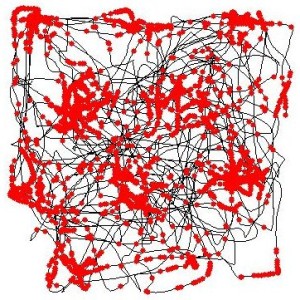
Sharp waves seem to have other uses as well. They are involved in internal mental events such as remembering or imagining. Sequences involving place cells that are correlated with ripples can be roads not travelling but imagined. The ripples compress time that is imagined, which is intuitively correct when we reflect in a moment of events that took much longer periods of time.
But, other research shows that immediate sensory information can also trigger place cells with ripples. This can be related to going forwards and backwards. Immediate stimuli can affect sharp waves during sleeping. This is another intuitively experienced observation when specific events just before sleep affect the content of dreaming as well as consolidation of other memories.
Gamma Waves in the Hippocampus
 Gamma occurs during the other two rhythms but less strongly. Gamma can have varied frequencies of 25 to 100 cycles per second. In CA1 of the hippocampus there are several different types. Slower gamma waves are stimulated by CA3. Faster gamma waves come from input of the entorhinal cortex. This research is confused by many other brain regions that produce slow and fast gamma waves.
Gamma occurs during the other two rhythms but less strongly. Gamma can have varied frequencies of 25 to 100 cycles per second. In CA1 of the hippocampus there are several different types. Slower gamma waves are stimulated by CA3. Faster gamma waves come from input of the entorhinal cortex. This research is confused by many other brain regions that produce slow and fast gamma waves.
Inhibitory interneurons control gamma when it interacts with other rhythms. When one rhythm vibrates as part of a larger slower rhythm this is called phase lock of the two different oscillations. There are a variety of different interneurons that participate in this.
During theta slow waves, gamma becomes phase coupled. Theta can modulate gamma waves through interneuron activity. Phase locking of theta and gamma occurs in mice while running and during REM dreaming sleep. It appears that particular theta rhythms trigger interneurons to create gamma that phase locks.
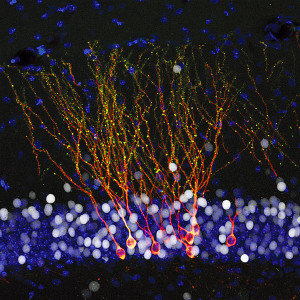
Specific layers of the hippocampus CA1 have different gamma rates during navigation. Slow and fast gamma waves are related to these different layers and are associated with different interneurons. It appears that most of these hippocampus regions are involved in making slow and fast gamma phase locks. It is related to also the balance of excitatory and inhibitory activity.
Entorhinal cortex sends sensory information to the memory hippocampus centers. This input produces fast gamma. Some research associates fast gamma with sensory input. These aren’t involved in future and imagined scenes. Fast gamma also seems to be related to present activity such as the particular speed during running. When mice were going to a particular reward fast gamma became stronger. But, other studies do not associate fast gamma with consolidated memory but only temporary working memory.
Another question is whether slow gamma retrieves memory from the CA3 region. Gamma coupling with theta in the CA1 and the entorhinal cortex does appear to be related to replay of smell memory in rats. It appears to help remember previous travel scenes. The timing is condensed as in other memories.
But, not all studies show this. Some show slow gamma in completely new activities. New events seem to be related also to variations in theta rhythms.
Interactions of Different Brain Waves
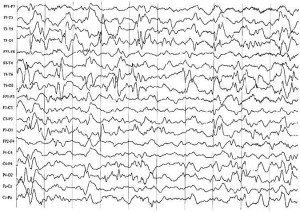 Sharp wave ripples occur when there is no animal activity. When activity starts, cholinergic neurons suppress these waves. Theta then becomes prominent. When animals take in sensory data, it alters theta waves to mark differences. These unique theta waves are equivalent to a snapshot of activity in the moment.
Sharp wave ripples occur when there is no animal activity. When activity starts, cholinergic neurons suppress these waves. Theta then becomes prominent. When animals take in sensory data, it alters theta waves to mark differences. These unique theta waves are equivalent to a snapshot of activity in the moment.
Theta also is involved in thinking about memories and the future. Different theta activity demarcates these activities as well. This can be affected by gamma waves affecting the slower theta waves. Fast gamma may emphasize sensory input and slow internal thoughts from CA3. Slow gamma can also related to ripples of inactivity.
The sequences of theta can occur later without the exploratory behavior that stimulates them. This can occur during ripples in a shorter version during deep sleep and inactivity. It is termed replay,
Hippocampus Brain Wave Signals
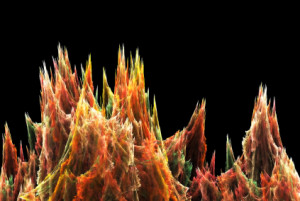 Neurons communicate in multiple different ways simultaneously. Neurons signal with chemical and electrical synapses. They also send cytokines to local immune cells from parts of the axon that are not myelinated. At the same time groups of neurons signal to other brain regions using synchronous oscillations.
Neurons communicate in multiple different ways simultaneously. Neurons signal with chemical and electrical synapses. They also send cytokines to local immune cells from parts of the axon that are not myelinated. At the same time groups of neurons signal to other brain regions using synchronous oscillations.
Recent research in the hippocampus shows three prominent brain waves that are easily measured. These brain waves in deep hippocampus are able to be measured because many layers of cells are parallel and there are many strong interneurons inhibiting. These different waves can nestle inside of one another to make combined complex signals. Theta, gamma and sharp wave ripples work together to communicate complex information about memory.
Many other regions of the brain produce oscillations, but are more difficult to measure. As technology improves, the full extent of this overlapping set of signals will be gradually understood. It does appear that brain waves are a very detailed form of neuronal communication, along with neurotransmitters and electrical synapses.